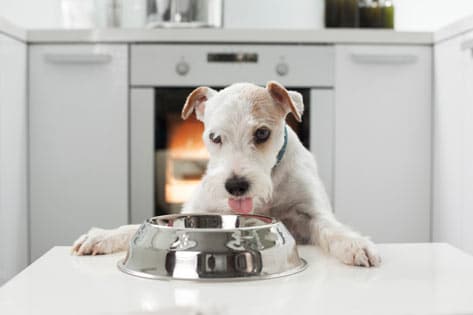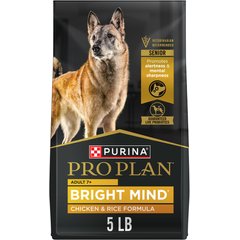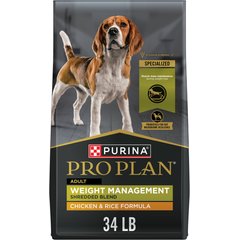Concerns About Pet Food Recalls and Safety Paramount to Owners, petMD Survey Finds

By Lorie Huston, DVM
May 1, 2013
petMD recently conducted a survey of pet owners on the subject of pet food recalls that indicated that most pet owners have concerns about their pets’ food. More specifically, pet owners are worried about the potential for contamination of pet foods and what pet food companies can do to prevent contamination. Here are some of the top findings from the survey.
1. Pet Food Recalls Affecting Consumer Confidence
The recent rise in pet food recalls is taking its toll on consumer confidence. Of the pet food consumers taking the petMD survey, 82% said they don’t think pet food manufacturers are “currently doing all they can to keep pet food free of salmonella and other contaminants.”
No pet food company wants to go through the hassle of a recall. However, no reputable pet food company wants to risk the health of the pets that consume their food products either. In many instances, foods are recalled not because there is certainty that the food is dangerous but because testing has indicated that a potential problem might exist. Many pet food companies would rather be cautious in this situation, issuing a voluntary recall rather than risking the possibility that even one pet might become ill. There are also several quality control procedures that responsible pet food manufacturers can and do perform to help prevent contamination of their product.
Vet Recommended Dog Food
- Eukanuba Premium Performance Puppy Pro Dry Dog Food, 4-lb bag$25.99Chewy Price
- Purina Pro Plan Bright Mind Adult 7+ Chicken & Rice Formula Dry Dog Food, 5-lb bag$24.68Chewy Price
- Purina Pro Plan Adult Weight Management Shredded Blend Chicken & Rice Formula Dry Dog Food, 34-lb bag$77.48Chewy Price
- Hill's Science Diet Adult Lamb Meal & Brown Rice Recipe Dry Dog Food, 33-lb bag$83.99Chewy Price
2. Consumers Unaware of Pet Food Quality Control Measures
Only 15% of respondents know if the manufacturer of their pet food is practicing strict, physical separation of raw ingredient from cooked product in the manufacturing process, a crucial practice for controlling food contamination. However, the petMD survey shows that an opportunity exists for pet food manufacturers to win new business (or retain current customers) since 86% said they would be more likely to buy a pet food if they knew these practices were in place.
Separating the raw ingredients from the cooked product is one of the most important considerations in reducing the risk of contamination. Cooking is the process that kills microbes, such as Salmonella, which can contaminate foods. Responsible pet food companies realize this and go to extremes to keep the areas where raw ingredients are received and prepared separate from the areas where the cooked product is processed and packaged. In these facilities, employees must go through a number of decontamination procedures, such as foot baths, hand washes, covering shoes with disposable booties, and more before entering the “clean” portion of the facility. Even the airflow in these facilities is designed to prevent recontamination. While some manufacturers may fall short in this area, responsible pet food manufacturers operate their facilities in this manner. What's disconcerting is that not many pet owners know whether their pet food company of choice practices these quality control procedures.
3. Manufacturers Should Hold Pet Food Until Test Results Come Back Clean
Respondents also reacted strongly against a common industry practice of shipping food to retail destinations before final test results from the manufacturing facilities has identified whether a batch of pet food is indeed salmonella free. Ninety-eight percent of survey respondents said that they want pet food manufacturers to hold products on site until test results are confirmed, a practice known as “positive release.”
Some pet food manufacturers abide by this practice. Unfortunately, it is not common in the industry. Choosing a trustworthy pet food company that goes this extra step in ensuring their products are safe is the pet owner’s best option in making sure their pet receives safe uncontaminated food. Pet owners can find out if their pet food manufacturer practices “positive release” by calling the 1-800 number on the pet food bag and asking if the company meets this standard.
4. 'Made in the USA' Pet Food is Preferred
Concern for food safety and contaminated ingredients from countries such as China has also sparked a strong “made in the USA” preference among consumers. More than 84% of people who took the survey would prefer pet food products that are manufactured in a U.S. facility, and 98% want to see ingredients come only from the U.S. or countries with regulatory systems similar to the U.S., but not China.
This should not come as much of a surprise, though, as China has not only proved itself to be an unreliable source for safe ingredients in the pet industry but in many other industries as well.
5. Consumers Want Pet Food Manufacturing Kept 'In-House'
Consumers also signaled disapproval for a common industry practice of “co-manufacturing,” where a pet food company outsources the manufacture of their products to a factory it doesn’t own and that is under the supervision of others. Eighty percent of the respondents in the petMD survey said that it is important to them that a pet food company manufactures its own food under the watchful eye of their own employees.
Pet food companies that manufacture their food in their own plant under the supervision of their own employees have a much greater degree of control over the process and the safety procedures incorporated into the process. Pet owners should check the pet food label before purchase. If the food is manufactured by a third party, the pet food label must include the words "manufactured for" or "distributed by" in front of the address of the pet food company. This is a red flag that the company has outsourced the manufacture of the food.
More to Explore
The Dangers of High Protein Dog Food
Is GMO-Free Dog Food Safer Than Regular Dog Food?



